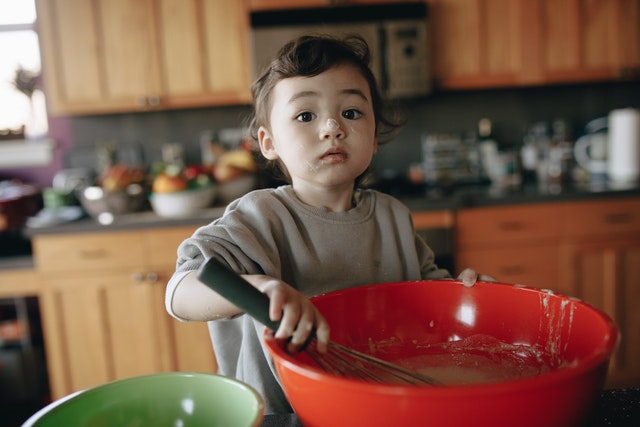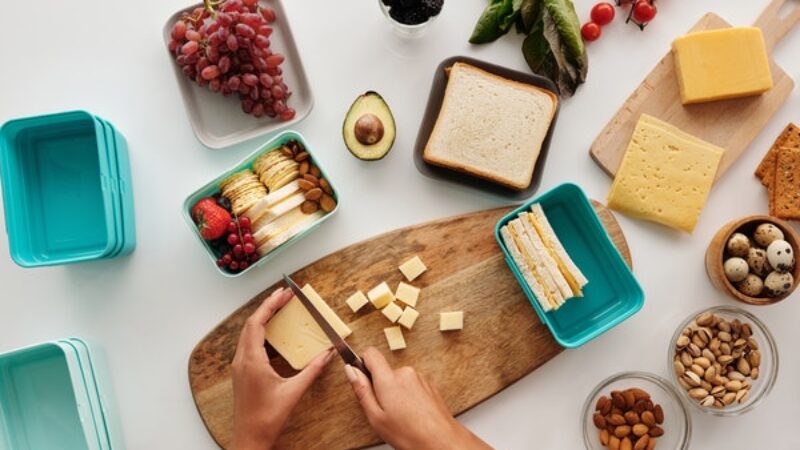As adults, cooking is a part of our everyday lives – so it only makes sense to get our children involved in the kitchen. After all, we’ve all got to eat! So we may as well make some memories in the process! To show you how young children can help in the kitchen, we’ve put together a list of simple tasks and techniques for you to try based on your child’s age and abilities.
So, without further ado, let’s dig in:
0-18 months
Although your infant may not be old enough to participate in the cooking process, there’s plenty you can do to make them feel involved.
Start by setting them up in a highchair so they can safely watch you work. Once they’re settled, offer them a handful of ingredients to touch, smell and play with. If you’re experimenting with baby-led weaning, you can also give them some small (soft) ingredients to taste!
The aim is to spark their interest by appealing to their senses. So don’t just talk through what you’re doing – allow your children to interact with ingredients and involve themselves in the process.

2-3 years
As they get a little older, your children can start getting involved with some safe, simple tasks. For example:
- Washing fruit and vegetables
- Finding ingredients in the fridge or cupboards
- Adding ingredients to bowls or mixtures
Although these are only small contributions, they are great examples of how young children can help in the kitchen. (Especially when they’re first finding their feet and establishing some independence!)
3-4 years
In most cases, by the age of 3 or 4, your child will be able to walk, talk and follow instructions. So they can certainly afford to be a bit more hands-on in the kitchen. Just remember, they’re still developing their fine motor skills at this point- so avoid any tasks that are too tricky/intricate. Instead, get them involved with:
- Mashing soft foods (i.e. potatoes, bananas)
- Measuring dry ingredients using cup measures or scales
- Stirring cool mixtures
- Making simple sandwiches/packed lunches
These tasks will allow your toddler to become actively involved in the cooking process without risking hurting themselves.

4-6 years
At ages 4-6, your child will have developed greater dexterity, meaning you can start introducing them to some more advanced cooking techniques. For instance:
- Chopping
- Spreading
- Folding
- Sieving
Whether you’re buttering toast or baking a birthday cake, these are all great examples of how young children can help in the kitchen. Just make sure you have plenty of plastic knives on hand!
Kitchen chores that don’t involve cooking
If cooking doesn’t interest your children (or you’re concerned about them injuring themselves), there are plenty of other ways they can help out in the kitchen. For example, you could ask them to help you lay the table, wipe down surfaces or wash up after dinner. That way, they can still contribute at mealtimes without causing chaos in the kitchen.

Find the fun in cooking
You don’t need to be a chef to teach your children about cooking. The only aim is to have fun and (hopefully) pass on some life-long skills. So what are you waiting for? Roll up your sleeves and start making some memories!
At Schoolhouse Daycare, we enjoy learning, encouraging confidence and we love life! If you think your child would enjoy life at Schoolhouse, then please do not hesitate to arrange a visit.



